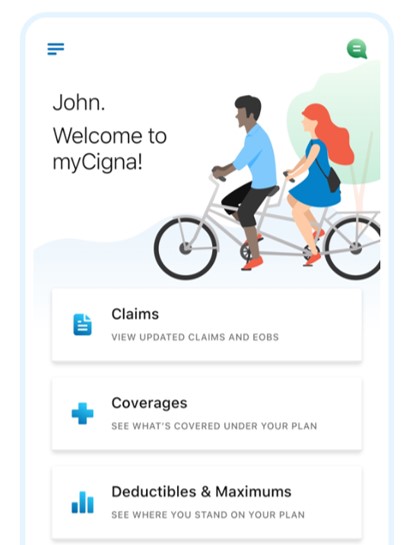From understanding health benefits and care needs, to deciphering new technologies and digital tools, navigating health care is full of challenges. However, business can help their employees make the most of their options by ensuring they fully understand and optimize their choices.

Health care has changed dramatically in the last few years. The World Economic Forum describes the shift as "a massive wave of investment, innovation and new entrants from the technology, telecom, and consumer industries." Deloitte sums up the innovations as the "convergence of digital technologies and health care delivery models."
With this rapid evolution comes new challenges for both employees and employers to better understand these changes. From understanding health benefits and care needs, to deciphering new technologies and digital tools, navigating health care can be difficult. Employers can help their employees make the most of the options out there by ensuring they fully understand and optimize their choices.
A New Era of Health Care
As employers evolve their benefit offerings to address emerging employee health needs, helping employees understand the benefits and benefits changes becomes even more difficult. In fact, the availability of new and better technologies designed to improve the health care experience can sometimes feel even more complicated for workers to find the right care or assistance.
Helping employees access their health benefits to prevent and treat health conditions will lower overall health costs. In fact, a Harvard Business Review (HBR) survey found that 80% of executives say their organization thinks it's important that employees engage with and take full advantage of their health and wellness benefits. However, 53% of employees within the survey said they had difficulty understanding and navigating those benefits, thus making it hard for them to achieve that engagement.
How to Help Employees Navigate Health Care
 To help sustain a healthy workforce, today's leaders must help employees fully understand and navigate their health benefits. When employees understand and use their benefits, it's a win-win.
To help sustain a healthy workforce, today's leaders must help employees fully understand and navigate their health benefits. When employees understand and use their benefits, it's a win-win.
Your people become healthier and happier, and your business becomes more productive. We have the numbers to prove that out: In a 2021 study commissioned by Cigna, survey data revealed that companies with a healthy workforce saw higher productivity, stronger staff morale, and greater employee retention and loyalty, which results in higher revenue.
But, how can you help make that happen? The first step is to set a foundation to ensure employees know the basics.
When educating employees on health care, focus on the following concepts:
- Understanding the complete definition of health literacy.
In the past, health literacy meant knowing specific health conditions or health insurance terms, such as explanation of benefits (EOB), deductible, co-pay, and co-insurance. But, just as health care has evolved, so has the terminology. Recently, the conversation has shifted the definition of health literacy to recognize broader forms of health-related knowledge, such as information about digital and virtual health care tools, the importance of whole-person care, and the role that social determinants play in community health. Cigna has developed intuitive health engagement tools and resources to help our customers. For example, Cigna One Guide uses advanced analytics to provide easy personalized help through myCigna.com, as well as dedicated apps on both iOS and Android. And if your employees need more one-on-one support, they can easily get the assistance they need through the chat and one-touch call button in the app.
- Accessing benefits information online.
When employees can quickly and seamlessly find the information they need, they are more likely to use their benefits and seek out the care they need. This includes having easy access to their member portal where they can find doctors and clinics, review explanation of benefits, predict the cost of a procedure or doctor's visit, or manage claims, among other things.
- Understanding whole-person health.
Overall health involves more than just physical condition. Mental, financial, and social health are additional dimensions that can all impact one another. Stress from financial woes, for example, can result in anxiety, headaches, and emotional withdrawal. Good nutrition, exercise, sleep, and social interactions can also improve whole-person health. Cigna One Guide helps your employees take an active role in all areas of their health and supports them throughout their health journey by sharing effective ways to stay healthy and save on health care costs.
- Destigmatizing mental health care.
By raising awareness of the importance of mental well-being and including mental health coverage in your benefits—particularly the ability to meet with a mental health professional via virtual care and digital apps—you can make employees feel more at ease accessing the help they need in a tumultuous world. Cigna's Employee Assistance Program (EAP) provides access to resources and licensed clinicians that can support your employees (and anyone in their household) with challenges such as substance use, family and financial issues, and stress.
- Using virtual care and digital tools.
Virtual care helps employees interact with their doctors and specialists remotely, which is paramount in today's working environments. Video conferencing, texts, chats, and phone calls mean employees can connect on their laptops and mobile devices wherever they are and on their own time. Having access to digital tools such as health and wellness apps is also a great way for employees to take control of their own overall health.
Clearly Communicate Your Benefits and Always Look to Improve
In many companies, it's common to discuss health care benefits during the open-enrollment season, but then not mention them again throughout the year. During that time, employees may forget all of the information they crammed to learn so they could make a decision.
Instead of only discussing health care benefits a few weeks a year, make it part of an ongoing conversation. To help employees build their health literacy, hold events such as a benefits overview lunch or engage in employee resource group discussions throughout the year. These events can help to share all the benefits features and offerings—from customer service to digital tools—included in your plan.
 Be sure to reach employees who work in the office, from home, and off-site, and use various communication tools to ensure all employees have easy access to content. Providing 24/7 access to a learning or knowledge center for self-service education can enable employees to learn at their own pace and on the topics that are relevant to their unique health needs.
Be sure to reach employees who work in the office, from home, and off-site, and use various communication tools to ensure all employees have easy access to content. Providing 24/7 access to a learning or knowledge center for self-service education can enable employees to learn at their own pace and on the topics that are relevant to their unique health needs.
In addition, it's important to measure results, engagement with benefits, and access to tools such as myCigna.com, and to leverage employee feedback at regular intervals via an online survey or discussion groups. Tracking engagement will tell you how effective your efforts are and where to improve going forward.
Invest in Your People; Invest in Your Business
Health care options will continue to evolve, combining high-touch and high-tech capabilities for connected, personalized care. Alongside this evolution, easily navigating new health care systems becomes imperative for employees and employers.
With proper support and education, employees are more empowered to make the best decisions for their overall well-being and your business gets a boost as a result. When you work with Cigna, together, we can make a long-term investment to grow your business by prioritizing the health and productivity of your workforce.

Employee Health is Your New Growth Plan
Discover more leadership insights around helping your employees make the most of their health care choices.